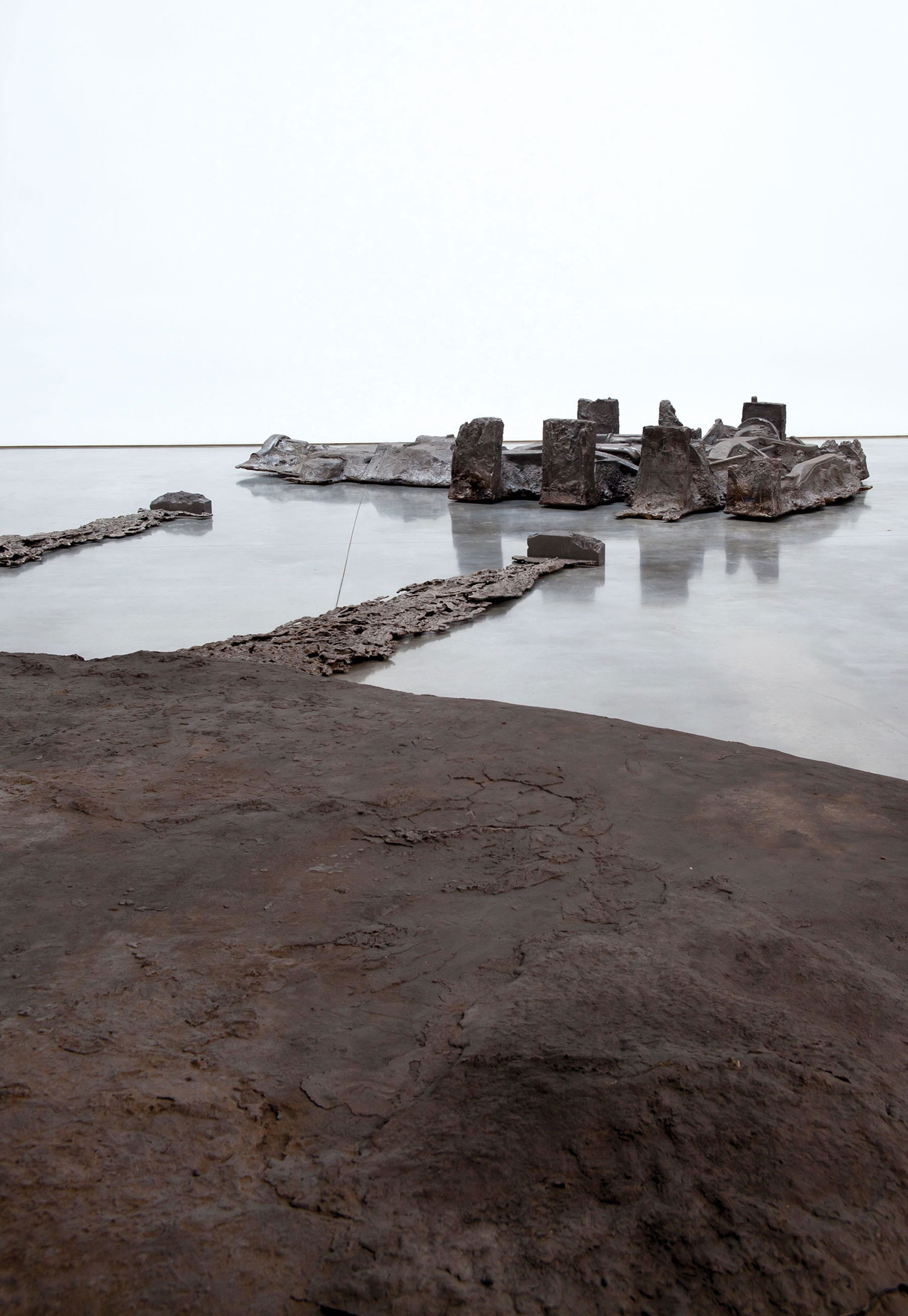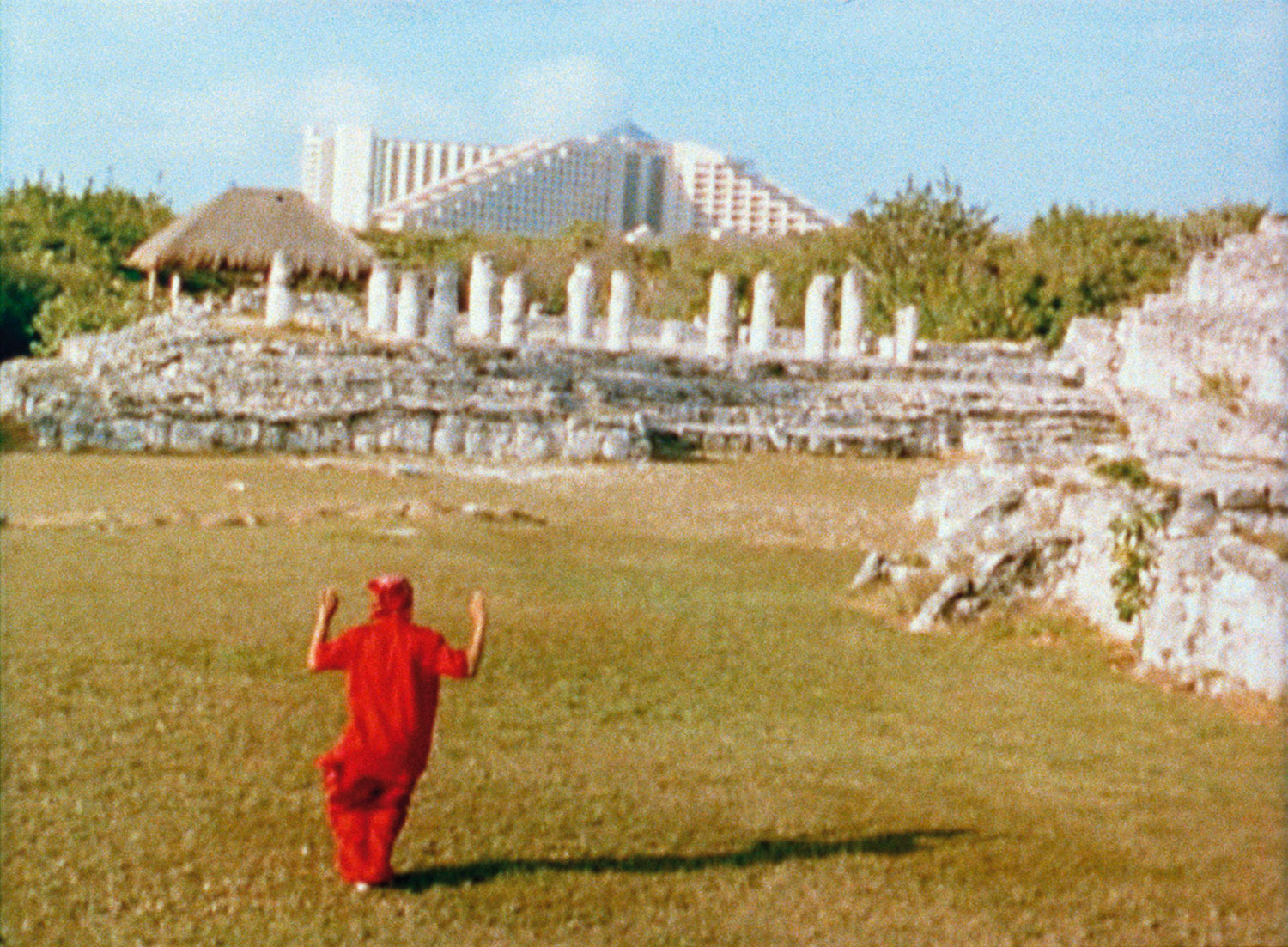
Lucy R. Lippard’s first numbered show was “557,087” at Seattle’s World’s Fair Pavilion in September 1969, followed a few months later by an expanded version of the same show entitled “955,000” at the Vancouver Art Gallery and other sites in the city. These two exhibitions determined the format of Lippard’s subsequent number shows: a title reprising the population of the city in which the exhibition took place; large numbers of participating artists associated with post-minimal and conceptual art (but a selection reflecting less an intent to define a movement or style than the curator’s affinities for certain practices); and, for each show, a catalogue in the form of a set of 10 x 15 cm index cards. “2,972,453,” Lippard’s next exhibition in the series, was held in at the Centro de Arte e Communicion Buenos Aires in 1971, and, in 1973-74, Lippard’s final number show — “c. 7,500” — traveled from Valencia, California, to seven other venues in the US and Europe. (Neither “2,972,453” nor “c. 7,500” were installed by Lippard herself.) Although many of the same artists appeared in the first two number shows, “2,972,453” included only artists that were not part of the first two, while “c. 7,500” included only women conceptual artists.
Antony Hudek: The list of your number shows would go as follows: “Number 7” (New York, 1969), “557,087” (Seattle, 1969), “955,000” (Vancouver, 1970), “2,972,453” (Buenos Aires, 1970) and “c. 7,500” (Valencia, California, among other cities, 1973-74). Could the sequence of these titles reflect your interest in the expansion of the art world at the turn of the ’70s?
Lucy R. Lippard: To begin with, I don’t think “Number 7” should be considered as part of the series (and I can’t even remember what it referred to). The neutrality of numbers appealed to many of us in the conceptual sphere at the time. But I count as the real “number shows” those with population figures as titles and accompanying card catalogues. They were connected by the emphasis on minimal/conceptual and then strictly conceptual works. Conceptual art, partly due to its non-object portability, and partly because it was more welcomed in other countries/continents than it was in the US, opened up international possibilities. Previously, an artist had to have a dealer with enough resources to ship and send objects abroad. This of course still held true for the minimal art that was a major part of my first two number shows. But conceptual art in its purest form could be sent in the mail. This very much accelerated and expanded the audiences and, perhaps more importantly, did the same for communication between the artists themselves; they began to travel more, meet, become friends and collaborators, and pass on the word to those of us who traveled a lot less.
AH: The years covered by your number shows coincide with a major shift in your self-identification, from relatively mainstream critic and occasional curator to politically engaged “socialist feminist.” Could the process of making non-museum, collaborative, accumulative and non-hierarchical exhibitions have provided you with the language through which to translate the ideological transformations you were undergoing?
LRL: Certainly it was all connected, although I didn’t call myself a “socialist feminist” until the late ’70s. Very few of the North American conceptual artists I was involved with in New York did political or even socially concerned art, although their politics were progressive. I first experienced non-hierarchal collaborative processes in the Art Workers’ Coalition (AWC), and that led me and many others into the feminist movement, which in turn led to a far more committed kind of collaboration, which I have called the social extension of the collage aesthetic — familiar among women. Writing and activism were my ideological tools at that point. Curating per se didn’t have much to do with all this; although “open” shows were popular, I was too much a creature of the art world to give up selectivity altogether, for all my bitching about prevailing concepts of “quality.”

AH: You met Seth Siegelaub when you returned from Argentina in 1968. What was your curatorial relationship like? Did you perceive the notion of “dematerialization,” which you developed with John Chandler in relation to art objects, as applicable to art exhibitions, such as those you and Siegelaub were curating simultaneously but independently from one another?
LRL: I tend to fall for men around shared enthusiasms. Seth and I lived together off and on for a couple of years and we came together around ideas that each of us was independently promulgating. So we certainly interacted on our projects on a day to day basis. But perhaps more importantly, we were also influenced by the artists we hung out with, and those in the AWC, and by the endless talk around the issues we were all working out. We were on the same page even though we were very different people, so it was only natural that we collaborated on each other’s projects, even as it was very clear whose was whose. “Dematerialization” was my word; John and I hadn’t considered applying it to curating as that wasn’t a major interest of mine and he was coming from outside the art world. It was Seth who really dematerialized exhibitions, though he never used the word as far as I can recall. We were both interested in publishing, and his artists’ books, like Sol LeWitt’s, planted the seeds for Printed Matter. The Studio International magazine show (July-August 1970) was typical of the way we were all playing around with different forms. It was great fun. Henry Flynt had apparently coined the term “concept art” before John Chandler and I used “ultra-conceptual” in 1967. I hadn’t known about it and he felt ripped off. So, for that matter, did a Latin American critic (Oscar Masotta) who had used the term dematerialization around the same time; I’d never heard of him until the ’90s, when someone accused me of borrowing it from him. These competitive claims and counterclaims seem kind of silly now.
AH: In contrast to Siegelaub’s, your shows emphasized loose networks between diverse personalities, materials and styles — beginning with “Eccentric Abstraction” in 1966. Did you consciously privilege inclusivity as opposed to the club-like feeling of certain conceptual art circles?
LRL: Seth was a real networker too. He has a very smart, pragmatic way of looking at distribution that was not my forte. I much admired the way his shows took an entirely alternative tack, and the ways in which he could (almost) bypass the conventional art world mainstream process — the gradual building of a career through galleries, museums, critics and collectors. My own first two number shows — “557,087” and “955,000” — remained “physical” and dependent on places to be displayed, even when they included works that were “dematerialized.” “Eccentric Abstraction” was very different from the later shows — thematic and totally conventional in form. I was looking for objects that offered a sensuous alternative to the hard edges of minimalism, and although the artists shared no “style,” there was a formal commonality. The number shows, on the other hand, were just plain eclectic, which is the way my taste has always been. Conceptual cliques were hardly unique in the art world — which was in fact many art worlds overlapping to greater and lesser extents. By the late ’60s, I had totally rejected the Greenbergian notion that the only “good” art was exclusively such and such, anointed by so and so. In huge projects like the first two number shows and Six Years [Six Years: The Dematerialization of the Art Object from 1966 to 1972], I included a lot of artists I’d never met. If we met we tended to become friends, like Iain and Ingrid Baxter of the N.E. Thing Co. in Canada, where we had a lot of connections. If I have ever had a methodology, or an aesthetic, it could be defined as “one thing leads to another…”
AH: In a 1983 Village Voice article you wrote that “activists and avant-gardists have little expertise in working with thousands of people.” Do you see the role of the curator as combining the qualities of the cultural worker with those of the activist, through the effective reclamation of space?
LRL: Frankly, I thought very little about the “role of the curator.” By the ’80s I saw curating in an activist framework but not in the early ’70s, except of course in trying, from the outside, to open up the privileged spaces of the museum. I think I’ve protested more museums than I’ve curated for. One of my fondest memories is when the AWC took over the Guggenheim May 1 in 1971 in after they cancelled Hans Haacke’s show and Yvonne Rainer led a conga line around Wright’s spiral, which could have been designed just for that. And of course organizing exhibitions of women’s art was a different kind of internally subversive activism, much resisted in the mainstream, and decidedly a process of claiming — rather than re-claiming — space.

AH: You have called your 1973 book Six Years your “most successful curatorial effort.” Would you be willing to officially declare it part of your number shows?
LRL: Sure, that’s a nice idea, but it was more like an extension and culmination of the number shows. Six Years allowed me to be a lot more inclusive and reach a larger audience than I could ever have reached in the kinds of physical spaces available to me. It’s probably more of an archive than an exhibition, but you could call an archive a “zipped” exhibition.
AH: The increasing visibility of archives in exhibition settings has led many of us back to proto-archival curatorial experiments such as your number shows. You yourself anticipated this archival turn by co-founding Printed Matter and PAD/D. How do you see the relationship between curating and archives?
LRL: I’m not sure how archives are seen today (outside of Derrida, et al.) but my interest in them is less theoretical than practical. I got a taste for them when I worked in the MoMA Library for a year and a half, when I was just out of college in 1958. And when the Archives of American Art started I began to send them stuff to get it out of the house. I started PAD/D (Political Art Documentation/Distribution) because crucial models were being lost. Since the art magazines didn’t cover socially engaged work, groups knew little about what others were up to, especially in other states and other countries. (Coincidentally, Clive Phillpot, who was the MoMA librarian in 1979, was a founding member, and the PAD/D Archive ended up at MoMA; I’ve just been negotiating to have it opened back up and updated). PAD/D was initially intended to be only an archive, not the activist group it immediately became. My column in the Village Voice (from 1981 to 1985) was also devoted to the dissemination of ideas about activist art. I’ve always curated very contemporary shows, work that is just emerging from studios and current connections. I’ve never curated a historical show, but my most recent book (Down Country: The Tano of the Galisteo Basin, 1250-1782) involved a lot of research into archives of Southwestern history, and I much enjoyed it. Ever since “557,087,” I’ve been interested in getting art out of the galleries and museums and into different spaces for different audiences. My shows have been in student unions, women’s galleries, alternate spaces, public libraries, the streets, one in an old jail and several at the Union Headquarters of District 1199, where I organized a series of exhibitions in the early ’80s with Jerry Kearns, and one with Candace Hill-Montgomery. They’ve generally been pretty grungy; most were not sought out so much as they just sort of happened. But because I love archives — the fun of finding that one tiny item that changes everything — I’m retrospectively appalled at the lack of documentation. I didn’t have a camera until the mid- ’70s. I saw my exhibitions as part of the moment. I’m still convinced that not everything has to be recorded. There’s always plain old firsthand experiences and memories. I don’t think archives are the new site for curatorial engagement unless they’re consulted to find models that might work in contemporary contexts.
AH: In Six Years, you note that the index cards for the “2,972,453” catalogue were misprinted “in defiance of the organizer’s and artists’ wishes.” You also note that Jorge Glusberg claimed to have co-curated the show. Should we then consider this number show as yours?
LRL: I don’t recall how Glusberg tried to “share” the credit, but I do remember it pissed me off. Jeff Khonsary in Canada is doing some work on those shows now and will interview Glusberg. I’ll be interested to hear his side of it. And of course I never saw the show in Buenos Aires, so I have no idea how his installation did or did not conform to the artists’ guidelines. But I chose the artists and I certainly still claim it as my show.
AH: Why do you think your number shows are now becoming landmarks in an emerging history of exhibitions?
LRL: I have no idea why there is such a fuss over the number shows now. That’s a question for your generation. Decades ago, Newton Harrison told Aviva Rahmani, who recently repeated it to me: “Art is a process of attrition. Whoever is left standing is remembered.” So I’m still standing, unlike many of my friends, but I was always sort of pleased that art historians and curators never took me and my shows very seriously… until this recent inexplicable blast of interest.




